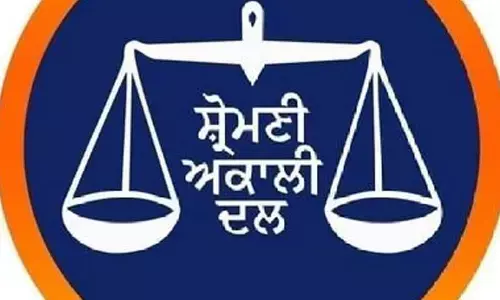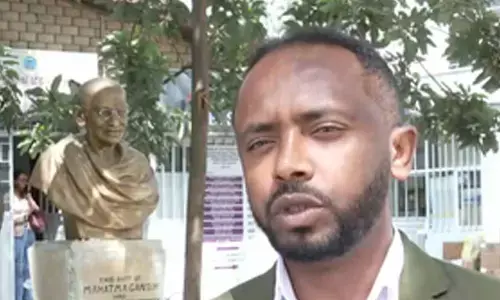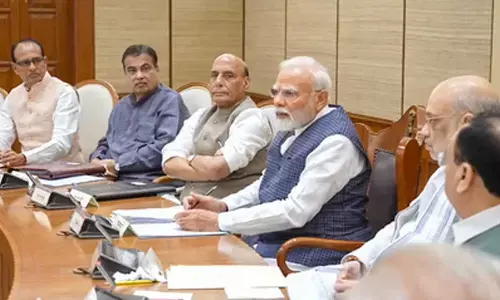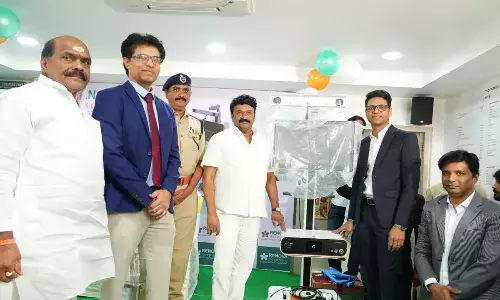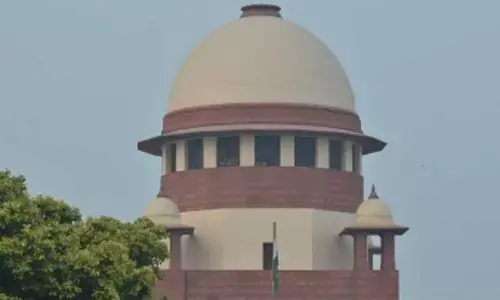Modi looks unassailable

The most convenient thing to say in the prolonged run-up to the just-concluded elections, especially in Uttar Pradesh, was that it would be a ‘hung’ assembly, giving majority to none. Of course, most did not believe that, but it was a ‘safe’ bet, not knowing the political preferences of the person asking for the prediction.
Where he could make the difference is his decisiveness, his ability – so far – to keep the development agenda safely above contentious and divisive issues that the conservatives in his party and the affiliate outfits, all owing allegiance to the RSS, demand. The ultra-nationalist hype and the toxic discourse are, however, likely to continue as Modi prepares to retain hold over Gujarat, his home state and that of his principal political strategist and BJP president, Amit Shah
The most convenient thing to say in the prolonged run-up to the just-concluded elections, especially in Uttar Pradesh, was that it would be a ‘hung’ assembly, giving majority to none. Of course, most did not believe that, but it was a ‘safe’ bet, not knowing the political preferences of the person asking for the prediction.
And now, animated debate centres around: was there a Modi wave and could you discern it? The outcome in UP is beyond anybody’s expectations; forget all those who claim we-told-you-so by hindsight. None among the media or the exit pollsters and those who were sympathetic to BJP, nor those who avidly worked to be ‘different’ in order to appear objective, often using demonetisation to scale down the BJP prospects, could discern it.
Those predicting the outcome of elections also got it wrong when it came to the scale of victory. This suggests that predicting elections may be a project bordering on futility in the Indian context. But then, the mainstream media, having dispatched its reporters to the electoral battleground, choose to disbelieve them. And keen to stay in the race for the eyeballs of readers/viewers, they spend much more resources on projecting the Exit polls.
At the end of the exercise, it is clear that Modi was, is and may stay, omnipresent for a long time. But whether there was a ‘wave’ is arguable. A wave should have seen the BJP along with senior ally Akali Dal defying anti-incumbency and romping home in Punjab. It should have captured Manipur hands down and retained Goa. The post-polls manipulations would not have required.
For the record, in both Goa, where the BJP lost, and Manipur, where Congress lost, Congress emerged as the largest party. In Goa, the BJP Chief Minister had lost his seat, requiring Manohar Parrikar to para-troop and return to the state.
Look at it another way. The BJP gained seats in Uttar Pradesh under Modi’s watch but lost percentage points in vote share from his 2014 parliamentary performance. The party virtually replicated the Congress performance in 1980, when the Congress won 309 seats with 39.6 per cent of the votes, while the BJP won 11 seats with 10.8 per cent votes. In 2017, the BJP has 312 (12 more won by its allies) seats with 39.7 per cent votes, while the Congress has seven seats with 6.2 per cent of the state’s votes.
Look at the vote share. The BJP’s dipped by three percentage points from its 2014 peak of 42.7 per cent. On the other hand, Bahujan Samaj Party supremo and four-time Chief Minister Mayawati’s tally went up from 2014 parliamentary polls when she drew a blank with an approximately 18 per cent vote share. While Congress with half her votes got Sonia Gandhi and son Rahul elected as MPs in 2014, Mayawati didn’t get a single MP. Did that mean Congress was, or is, more popular in UP than Mayawati?
Having said this, it must be accepted that in UP, this is an absolutely stunning victory. To repeat the performance of 2014 30 months on, in the wake of what many saw as the failed demonetisation gambit, without announcing a CM candidate, is a staggering feat.
Looking back, the parting comment of outgoing Uttar Pradesh Chief Minister Akhilesh Yadav that the people of his state preferred Modi’s ‘Bullet train” to the highway the latter had built is symbolic of the changed situation, post-polls.
Even Akhilesh would know that his solitary Agra-Lucknow highway had come too late in the day, after he had lost precious time working under the shadow of his family elders and showering favours on his party and clansmen, when Muzaffarnagar carnage took place under his watch.
His government took long to deliver relief and worse, a probe he ordered conveniently absolved the political leadership and fixed the blame for the carnage in which 80 persons had died on some officials. He showed no inclination to take on the political mischief behind Muzaffarnagar. It is hardly surprising that he lost the support of the Muslims across the state.
Akhilesh would have noted that against his highway that is a reality, the people thought Modi’s ‘Bullet train” promise into the near future was more credible. That such a train would barely touch UP and make no difference to their lives did not seem to matter.
Had Akhilesh rebelled against family controls a year or two earlier and taken full charge of the state, the resulting challenge would have made him perform better. Perhaps, outcome of the just-concluded election would have been different. But these are ifs and buts of our times, of little relevance.
The BJP now controls a dozen states and two-thirds of the country’s population. It appears to have successfully forged a coalition of upper, middle-ranking and lower castes and neutralise the Muslims to be able to manipulate the social arithmetic of Indian elections. It has also avoided being seen as doling out reckless patronage to a caste or group.
The political gains have come to Modi when he is half-way through his tenure as the Prime Minister. He is widely perceived as one who could get re-elected to a second term in 2019. Some foreign analysts have endorsed this assessment.
But even a week is a long time and predictions can go wrong in a diverse and vast polity like India’s. Late Rajiv Gandhi was voted out in 1989 losing a huge parliamentary majority. Atal Bihar Vajpayee’s BJP-led government had surprisingly lost power in 2004.
In the summer of 2017, Modi appears unassailable. Where he could make the difference is his decisiveness, his ability – so far – to keep the development agenda safely above contentious and divisive issues that the conservatives in his party and the affiliate outfits, all owing allegiance to the RSS, demand.
He will have to continue to walk the tight rope. And that is not going to be easy what with many a university campus across the country being restive. It’s not hunky dory in the nation. The ultra-nationalist hype and the toxic discourse are likely to continue as Modi prepares to retain hold over Gujarat, his home state and that of his principal political strategist and BJP president, Amit Shah. Polls are due in November.
The balance of power has decisively swung in BJP’s favour. It paves the way for a majority in Rajya Sabha, parliament’s upper house. That would facilitate legislations held up for long, including a nationwide tax regime meant to rationalize taxation.
The country will have a new president in July and a vice president in August. Needless to say, they will be Modi’s choices.
Economic performance has been tepid. The jury is out on whether Modi is an economic reformer or a believer in big state – and rising social tensions. His brand of "radical reforms" would include a cocktail of pro-poor programmes, a possible crackdown on tax dodgers and further curbs to discourage cash-based transactions now that the demonetisation demon has been laid to political rest.
Following his win, Modi spoke of an all encompassing “New India” concept where elected governments worked for everyone's welfare and not just for those who voted for them. He highlighted the need for opening a new chapter in Indian politics free of narrow parochial or communal ends.
This has interesting historical parallels in Franklin D Roosevelt’s "New Deal" (1933) and John F Kennedy’s inauguration speech talked of “New Frontiers” (1960). For those three decades, Democratic Party was established in the United States as a party with a liberal ethos and gave seven out of nine presidents. That has in some measure continued and Donald Trump’s advent is at the best a break.
Will Modi give ‘New India” a “New Deal”?








